When Chris King despatched out a press launch a few weeks again saying they’d simply obtained a patent for his or her AeroSet built-in, totally internally routed headsets, my quick response was, “Wait, why?“. In any case, these are the identical King headsets that we’ve been seeing on bikes already for greater than 4 years, now. There are even 3 completely different variations for inner bearings or exterior cups, now.
And whereas bicycle mechanics have begrudgingly accepted that inner routing by means of the headset is right here to remain, they’re all just about the identical, proper?
So, I made a decision to dig slightly deeper for perceive why. And even the way it appeared really to be patentable.
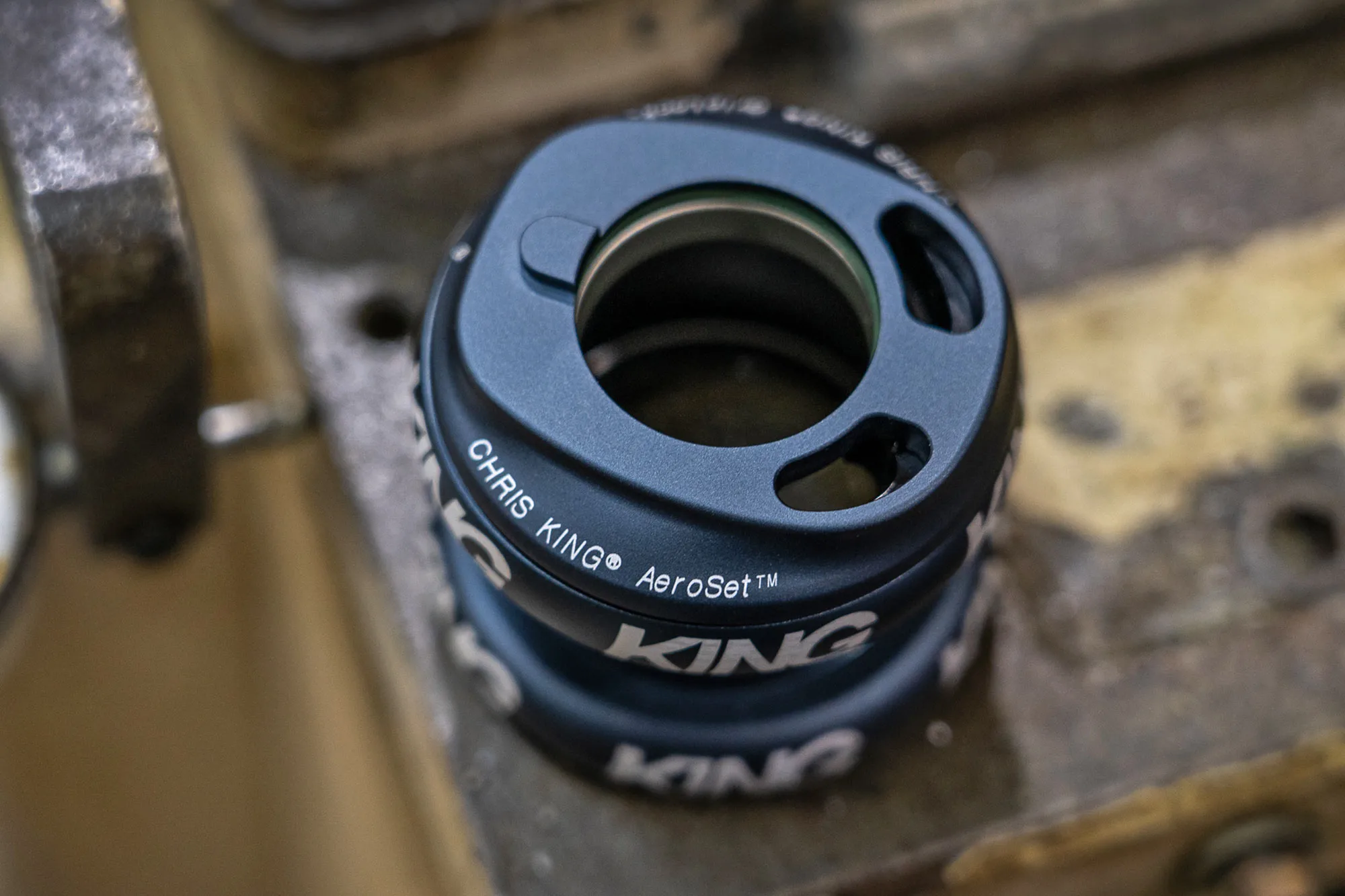
I do know from private expertise that Chris King headsets are a number of the best-made, longest-lasting, and even feature-rich headsets in the marketplace.
So what makes the AeroSet headsets particular? And what did Chris King really patent?
Right here we go once more about Inner Cable Routing headsets
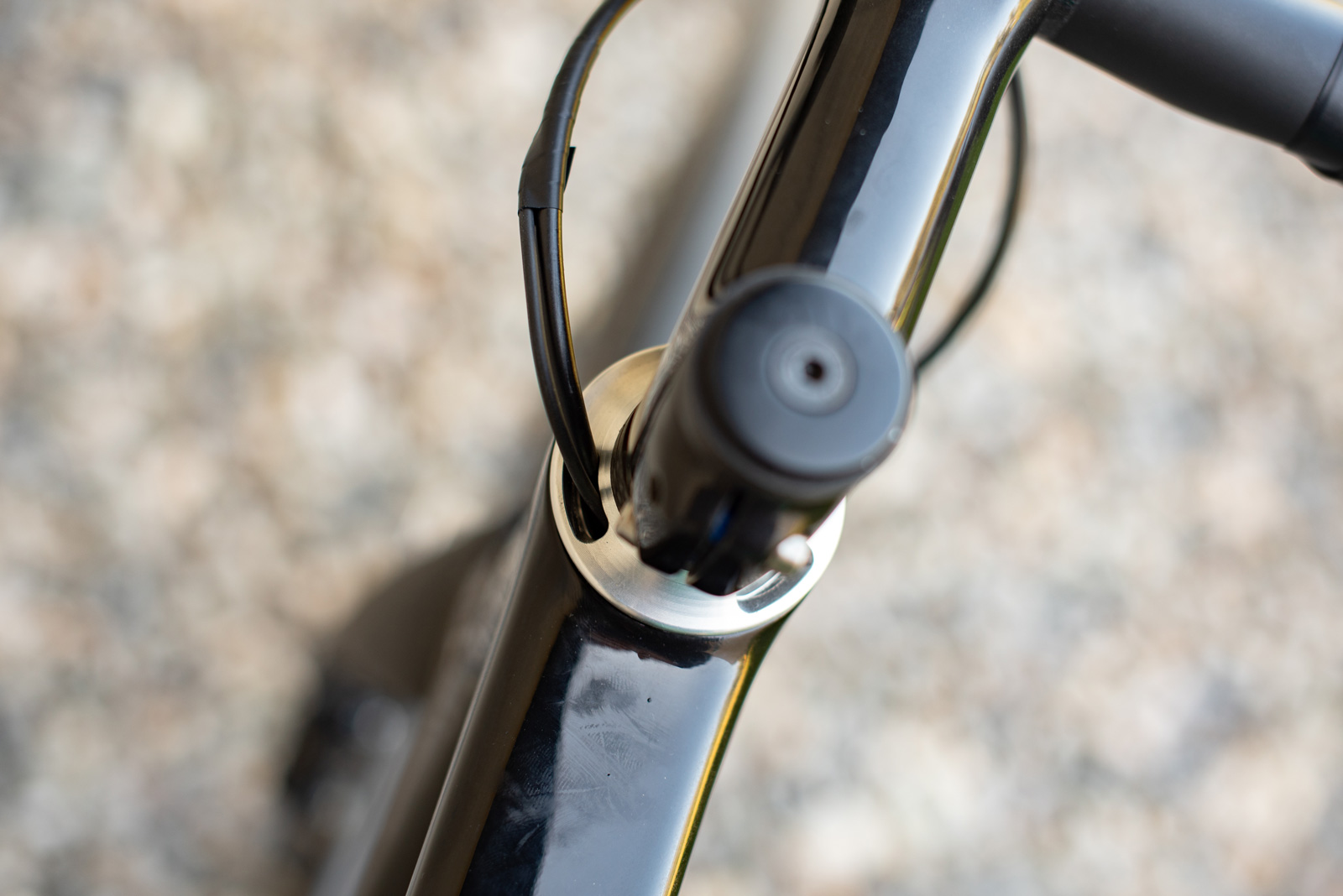

Let me preface this by saying that I – like these many mechanics we polled – am not an enormous fan of the added complication of routing shift cables and brake hoses by means of headset bearings. However I’ve a bunch of bikes with this contemporary totally inner routing. And I do recognize each the clear look, and in some situations, even the protected cables on account of hiding them contained in the cockpit.
However I shouldn’t have any bikes with a Chris King AeroSet, so I’m basing all of my ideas on patent drawings, descriptions, and essentially the most detailed images I’ve at my fingertips.
What makes Chris King AeroSet headset distinctive & patentable?
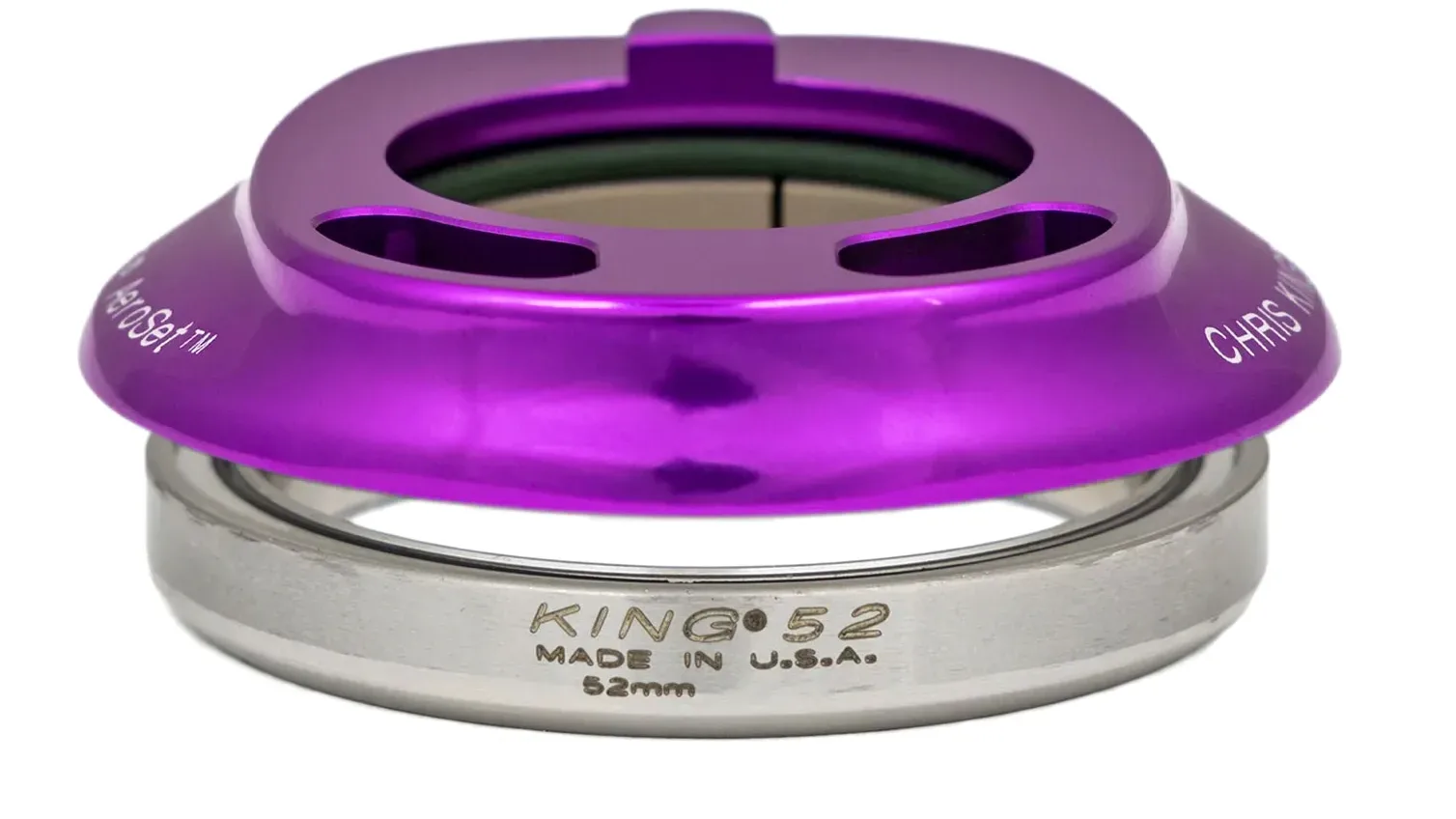

It seems that the Chris King AeroSet headset is, in reality, moderately distinctive amongst most different Inner Cable Routing (ICR) headsets. And that primarily boils right down to their long-running and already patented GripLock headset tech.
What’s GripLock once more, and why does it matter?
GripLock is a barely complicated 5-part higher headset cowl meeting that replaces the standard 2 higher items of a daily headset – the bearing cowl and a cut up tapered compression ring.
In that typical, threadless headset, the cut up ring each preloads the bearing and presses in opposition to the steerer tube to maintain it completely centered. Chris King’s problem with that’s that repeated impression forces transmit larger (and decrease) forces onto each the bearing after which into the floor of the steerer. Particularly with larger and repeated impacts using off-road, that’s extra prone to loosen a headset. And with light-weight (learn: carbon) steerer tubes, these impacts are more likely to wreck a steerer.


The patented Chris King GripLock resolution combines an higher headset cap (A), a cut up ring (C), and a separate decrease bearing contact ring (E) with two O-rings in between, in a design that isolates the separate forces centering/clamping the steerer tube and people preloading the bearing. That means, all of these repeated impacts from using tough terrain are directed solely into the bearing, not additionally redirected into the floor of your steerer tube.
Clearly, a variety of us trip headsets with out this patented tech (and are most likely a bit extra prone to should retighten our headsets often). However clearly, there may be some sound engineering that makes GripLock an excellent resolution.
Now how does that impression AeroSet headsets?


Properly, primarily, a Chris King AeroSet headset is only a GripLock headset the place that higher cap and decrease bearing contact ring have every been fattened up sufficient to sneak a set of internally routed cables by means of them. The trick is, the built-in cable routing resolution of the AeroSet advantages much more from the multi-part GripLock tech, as a result of the additional aluminum half vs. an ordinary ICR headset really helps higher distribute the uneven forces you get by reducing out huge holes to suit the cables inside such a good area.


How Is It Higher?
My understanding of this patent is that the AeroSet actually advantages from the prevailing multi-part GripLock meeting idea in order that:
The outer floor of the compression ring (130) is steady to uniformly distribute forces to the bearing (114).
The internal floor of the cut up tapered ring (140) is steady to uniformly distribute forces to the steerer (120).
The angled and tapered cable routing channels (136) by means of the AeroSet/GripLock compression meeting permit for loads of area for cables/hoses/wires whereas not decreasing the power of any particular person part of the system.
And due to the GripLock configuration, you get the identical isolation of separate axial masses and clamping forces.
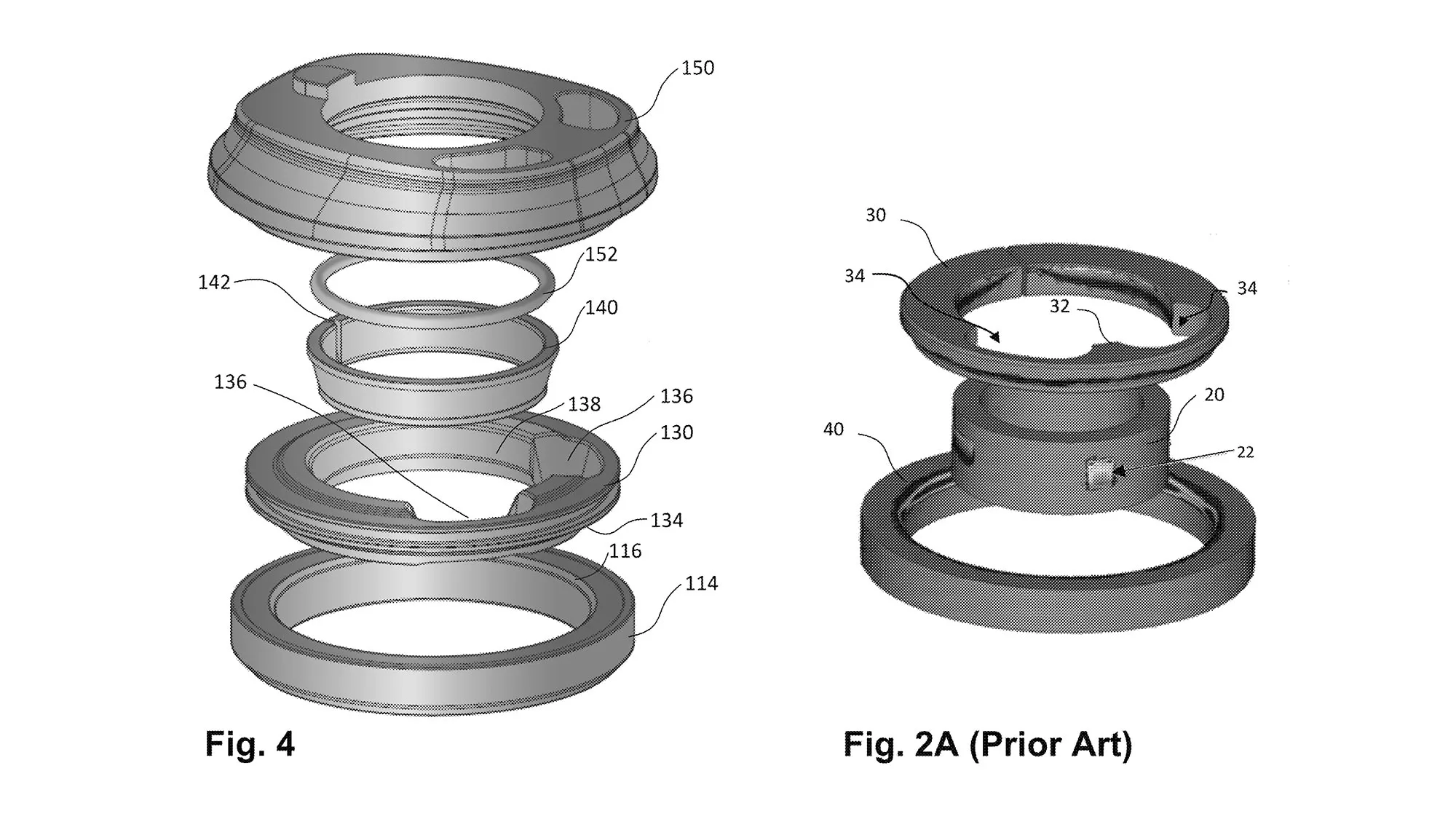

The one factor I didn’t see clearly defined within the patent is that these apertures (136) will finally create uneven forces on the cut up tapered ring, very similar to the prior artwork of Fig 2A. After all, the worst case state of affairs there may be some potential inner put on to the headset. And I think about that AeroSet/GripLock compression meeting half may simply and cost-effectively get replaced. Significantly better than damaging your fork’s steerer tube, and fewer prone to degrade efficiency by erratically carrying the precise bearing.
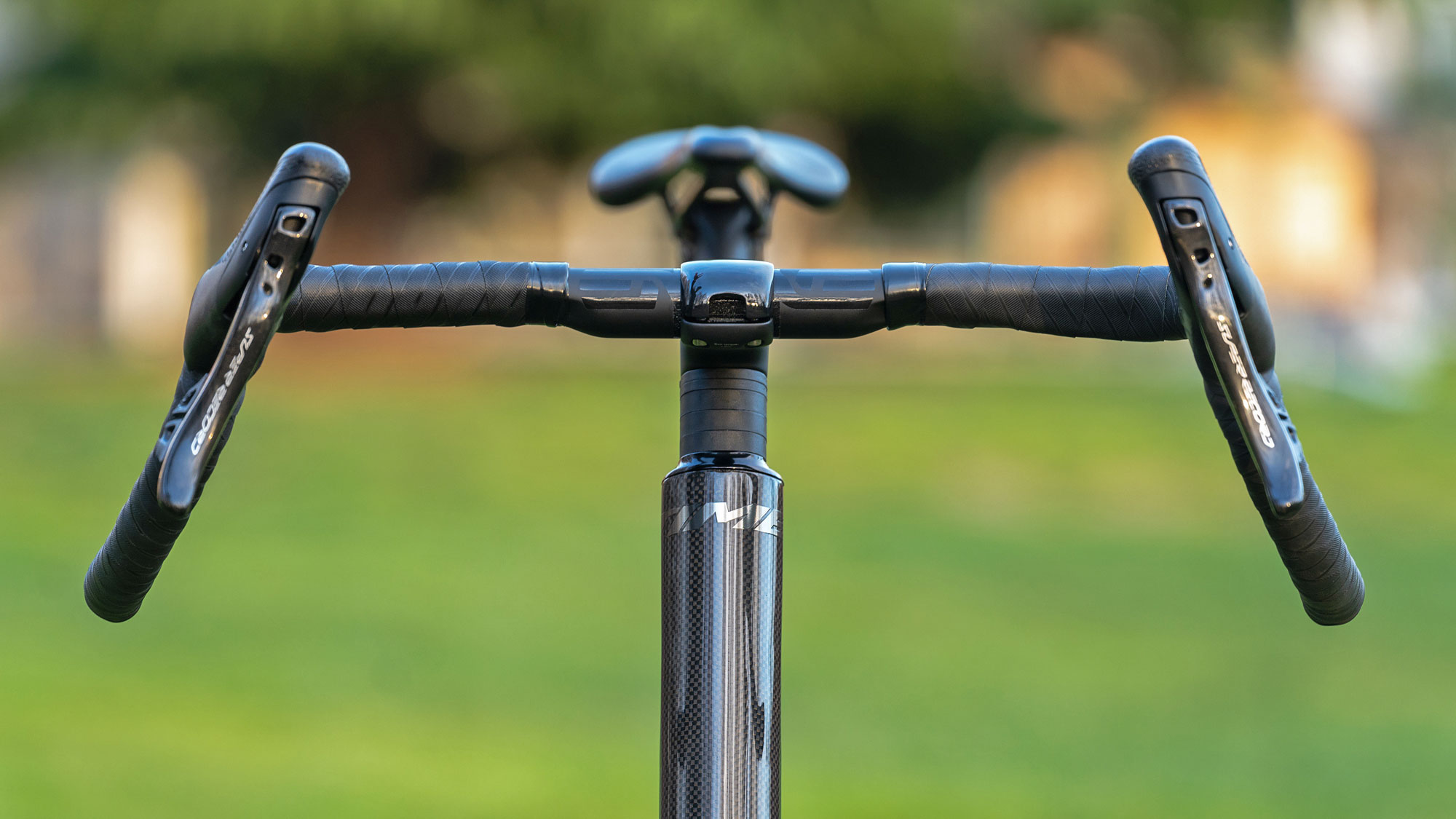

So, the ultimate result’s that AeroSet delivers the identical basic Chris King mixture of upper power, elevated reliability, easy serviceability, and most certainly lengthy life, too. Plus, in fact, a cleaner cable-free cockpit setup, too.
ChrisKing.com














